A short course, effectiveness against a wide range of bacteria, low toxicity is a list of the benefits of the drug. Azithromycin is used to cure diseases of infectious etiology. Take this antibiotic for three or five days with pathologies of the respiratory tract, urogenital sphere, skin and soft tissues.
Material Content:
- 1 Release forms and composition (active substance)
- 2 Pharmacological properties and indications for use
- 3 Age restrictions on admission
- 4 Instructions for use Azithromycin for adults and children
- 5 Special instructions for admission
- 6 During pregnancy and lactation
- 7 Azithromycin Compatibility with Alcohol
- 8 Contraindications, side effects and overdose
- 9 Analogs of azithromycin
Release forms and composition (active substance)
Azithromycin is created by introducing one nitrogen atom into the lactone ring of an existing erythromycin antibiotic. Thanks to this structural adjustment, it was possible to increase the resistance to acids by 300 times, compared with the original drug.
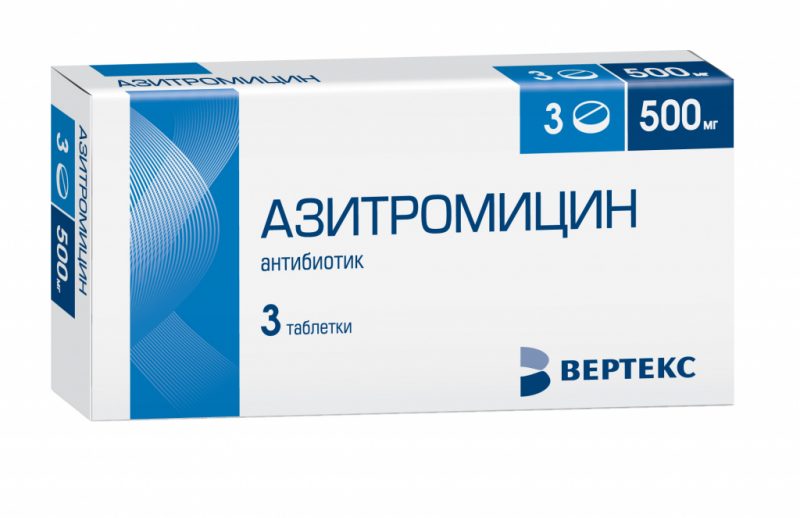
Over the past 10 years, a large group of drugs has appeared that contain azithromycin as an active substance (AI). Trade names vary, dosages of the active ingredient range from 125 to 500 mg. There are various pharmaceutical forms of azithromycin: powder, granules, lyophilisate, tablets and capsules.
Drugs with a similar concentration of antibiotic, regardless of manufacturer and commercial name, have the same effect on bacteria sensitive to DV.
The antibiotic content of azithromycin in the powder is from 100 or 250 mg / 5 ml.Excipients in this pharmaceutical form are sodium saccharinate, calcium carbonate, trisodium phosphate and other compounds.
Capsules, in addition to the antibiotic, contain lactose, povidone and other auxiliary ingredients. The composition of the soluble tablets further includes fruit flavors and aspartame.
Pharmacological properties and indications for use
The blocking mechanism of DV extends to the synthesis of protein molecules in the ribosomes of microbial cells. The antibiotic is effective against staphylococci (golden, epidermal), Ducrey sticks (a causative agent of sexually transmitted diseases), bordetella (pertussis sticks). In clinical studies, sensitivity to azithromycin Moraxella catarrhalis, Streptococcus spp. Was established. (- hemolytic streptococcus groups C, F, G).
It is interesting: adult pertussis - symptoms and treatment
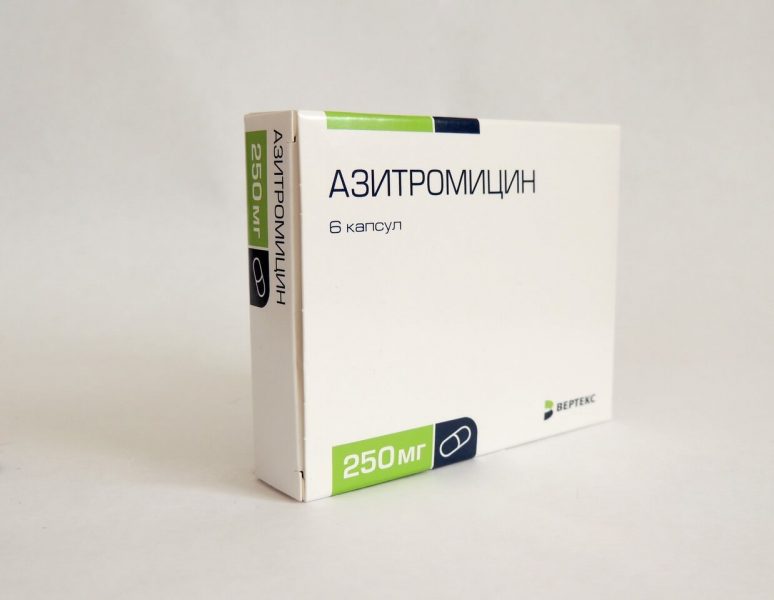
Azithromycin is active against other pathogens:
- hemophilic coccobacillus;
- gardnerella vaginalis;
- treponema pale;
- campylobacter;
- mycobacteria;
- clostridium;
- legionella;
- bacteroids;
- mycoplasma;
- ureaplasma;
- gonococci;
- chlamydia.
Azithromycin molecules are stable when exposed to hydrochloric acid, and therefore do not hydrolyze in the stomach. The antibiotic is rapidly absorbed in the small intestine and enters the systemic circulation. The concentration of the drug in plasma reaches its maximum value in just a few hours.
The difference between azithromycin and other antibacterial agents is the increased accumulation in tissues affected by bacteria (compared with plasma). In addition, the drug is delayed longer than other antibiotics. The therapeutic effect lasts 2 or 3 days after the third dose of the drug.
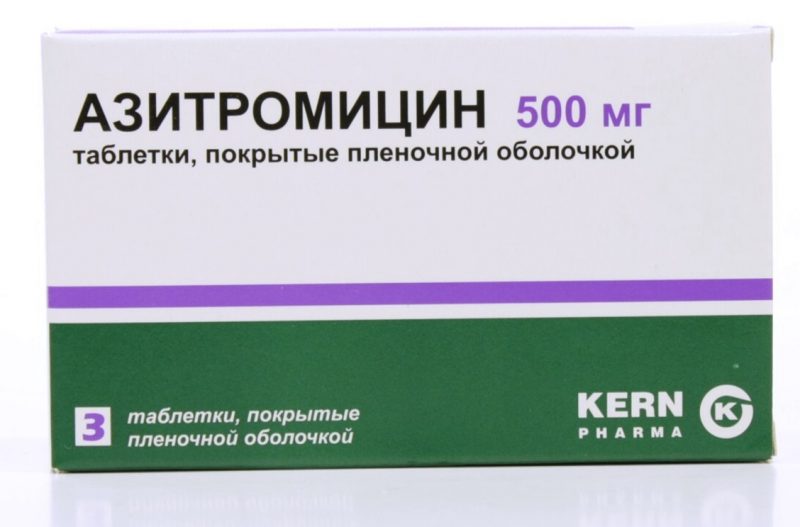
Azithromycin is popularly called the “3-day antibiotic”.
List of main indications for prescribing the drug:
- Microbial infections of the upper and lower respiratory tract, middle ear, paranasal sinuses.
- Gastritis, peptic ulcers against the background of Helicobacter pylori infection.
- Diseases of the genitourinary sphere of bacterial etiology.
- Purulent complications of dermatoses, impetigo, erysipelas.
- The first stage of borreliosis.
- Toxoplasmosis
- Scarlet fever.
One of the many clinical studies involved 275 patients with acute bronchitis. One group of subjects received 1 dose of azithromycin for 3 days. Patients in the control group received 500 mg / day of amoxicillin. In both groups, 90% of patients showed clinical improvement. Also, 80% of the subjects were not detected pathogens.
An abbreviated course is a significant advantage of azithromycin. This is an important condition for reducing the toxicity and allergenic effects of an antibiotic.
The effect of azithromycin against most gram-positive bacteria is less pronounced compared to erythromycin. Microbes resistant to this macrolide representative usually exhibit the same property with respect to azithromycin (cross-resistance).
Azithromycin is less commonly prescribed for tonsillitis and pharyngitis of bacterial etiology, compared with amoxicillin protected by clavulanic acid. So recommended by WHO experts. The reasons are the cross-resistance of bacterial pathogens to azalides and macrolides, the prevention of drug resistance.
Age restrictions on admission
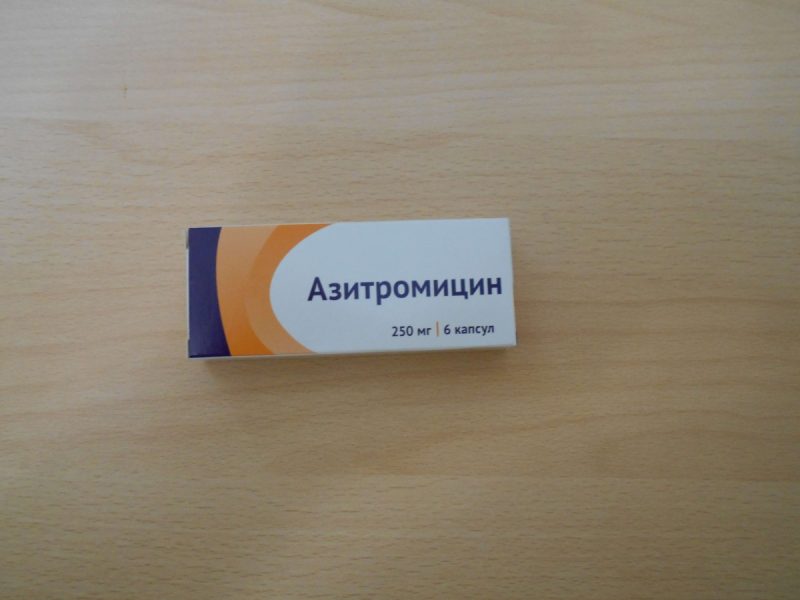
A suspension of azithromycin for children is allowed to be given to infants older than 6 months. If the child is older than 3 years old, has a body weight of more than 25 kg, then he can take soluble tablets, as well as capsules containing up to 250 mg of antibiotic. Adolescents under 12 years of age are not recommended to be treated with drugs with a 500 mg antibiotic dose.
Instructions for use Azithromycin for adults and children
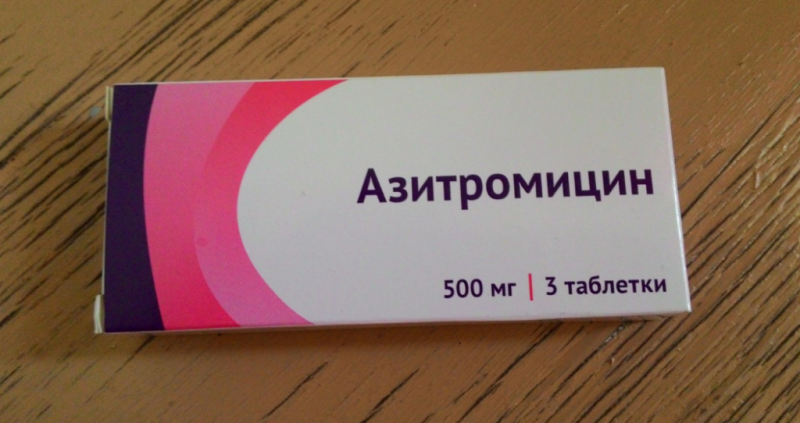
The summary contains general recommendations related to various pathologies, the treatment of patients of different ages. From the instructions for use, you can find out that adults with pharyngitis and other ENT diseases are prescribed 1,500 mg of azithromycin.This amount is divided into three parts to take one dose for three days. The doctor doses the medicine, taking into account not only the age, but also the weight of the sick person.
Azithromycin 250 mg tablets
This dosage is not intended for patients whose weight does not reach 50 kg.
How many tablets should be taken:
| Disease groups | At once | Per day | How many days |
|---|---|---|---|
| Respiratory tract diseases, sinusitis, otitis media | 2 | 1 | 3 |
| Infections of the skin | 4 - on the first day 2 - from 2 to 5 day | 1 | 5 |
| Acute urogenital infections | 4 | 1 | 1 |
| Borreliosis | 4 - on the first day 2 - from 2 to 5 day | 1 | 5 |
| Helicobacter pylori eradication | 4 | 1 | 3 |
500 mg tablets
How many tablets should be taken by adults:
| Disease groups | At once | Per day | How many days |
|---|---|---|---|
| ENT infections | 1 | 1 | 3 |
| Infections of the skin and soft tissues | 2 - on the first day, 1 - from 2 to 5 day | 1 | 5 |
| Acute urogenital infections | 2 | 1 | 4 |
| Borreliosis | 2 - on the first day, 1 - from 2 to 5 day | 1 | 5 |
| Helicobacter pylori eradication | 2 | 1 | 3 |
Azithromycin Capsules 250 mg
The content of DV is the same as tablets. You can drink Azithromycin capsules according to the same scheme as tablets with a dosage of 250 mg.
500 mg capsules
If the content of the active ingredient is the same as in tablets, then the regimen and course of therapy are similar.
Dispersible tablets
This relatively rare form of antibiotic release contains from 125 mg to 1000 mg of azithromycin. A dispersible tablet is swallowed whole or previously dissolved in a small volume of water (50-100 ml). The drug can be taken by patients whose body weight is more than 45 kg. Daily doses, course - the same as for "regular" tablets, if the antibiotic content coincides.
Azithromycin suspension for children
After buying the medicine, you should dilute the powder directly in the bottle. Drinking water at room temperature is poured to the mark. Shake the vial vigorously. The prepared suspension is also shaken before the next use.
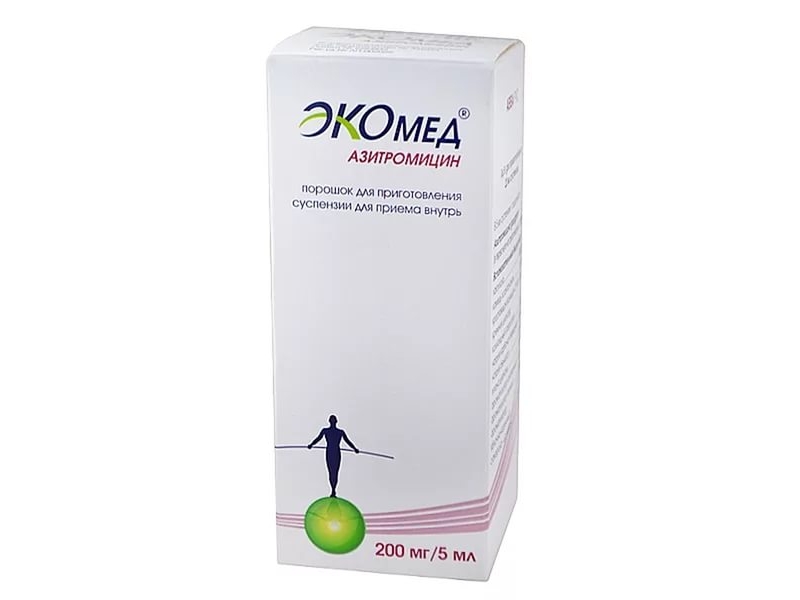
Application for children, taking into account body weight:
| Dose of azithromycin, mg / 1 kg of body weight | Per day | How many days |
|---|---|---|
| 1st option: 10 2nd option: 10 - on the first day, 5 - from 2 to 5 day | 1 1 1 | 3 days 5 days |
The measuring spoon, a plastic cup with the applied divisions or a special syringe without a needle facilitates dosing. One of these devices or all attached to the bottle.
Special instructions for admission
Nutrients, fluids in the digestive tract can alter the absorption of the drug. Drugs containing azithromycin as DV are recommended to drink for 1 hour, or 2 hours after one of the main meals. After swallowing, the suspension should be washed down with several sips of water in order to dissolve and wash off the remnants of the product in the mouth.
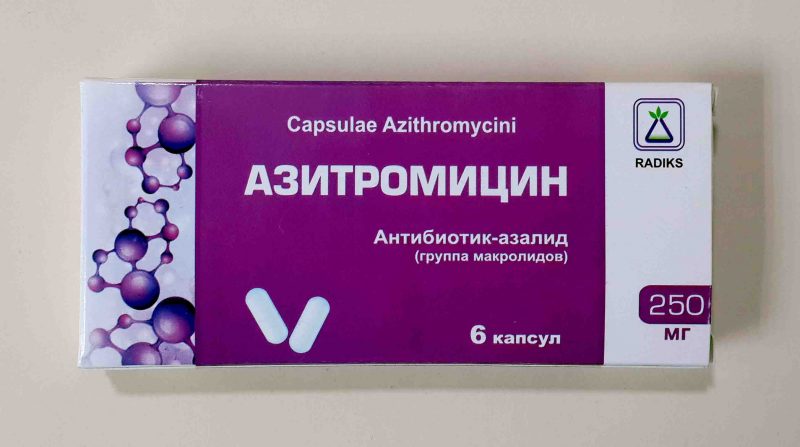
Other drugs can enhance, neutralize, or reduce the effect of azithromycin. It is necessary to observe an interval of 2 hours between taking an antibiotic and another drug. Such a break is especially important with simultaneous treatment with azithromycin and fluoroquinolones, antacids and probiotics.
During pregnancy and lactation
The use of azithromycin is allowed when the potential harm to the fetus is less than the health benefits of the expectant mother. The use of the drug during pregnancy requires great care, it is carried out under the supervision of a specialist. An antibiotic can be prescribed to a woman during lactation. In this case, it is recommended to cancel breastfeeding or take a break.
Azithromycin Compatibility with Alcohol
The abstract does not contain information on the interaction of the antibiotic with ethanol. Also in the application document there is no ban on the simultaneous administration of the drug Azithromycin with alcohol.

However, alcohol is not compatible with most drugs because of a slower and lower absorption, increased peristalsis, which inevitably leads to a decrease in the concentration of the drug in the blood and tissues, weakening therapeutic effect.In addition, ethanol has a toxic effect on the liver, reduces the ability of the body to "utilize" antibiotic molecules.
Contraindications, side effects and overdose
There is a relatively small list of diseases and conditions in which it is forbidden to take the antibiotic azithromycin. Do not use drugs with this DV with a diagnosed hypersensitivity to it.
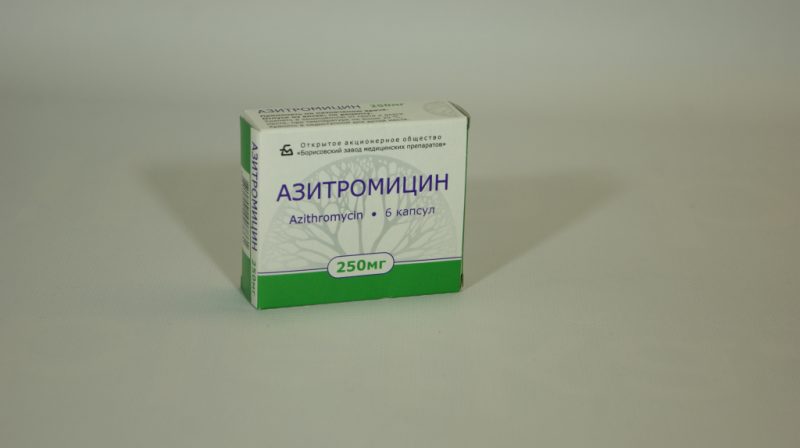
Other contraindications:
- increased susceptibility to azalides, erythromycin and other macrolides;
- lactose intolerance, malabsorption of simple sugars (for some forms of release);
- severe liver and / or kidney dysfunction;
- allergy to auxiliary ingredients;
- simultaneous treatment with ergotamine.
The most common side effect is manifested by the digestive system. Dyspepsia, flatulence, diarrhea occur. Severe consequences - jaundice, hepatitis. There may be other adverse reactions to the antibiotic.
Manifestations of an allergy to azithromycin:
- rash in the form of urticaria;
- photosensitivity;
- itching
- erythema;
- conjunctivitis;
- Quincke's edema;
- anaphylaxis.
An antibiotic suppresses not only pathogenic flora. Beneficial microorganisms also suffer. As a result, oral candidiasis develops, a vaginal type of yeast infection. If necessary, the doctor will cancel or replace the drug with a safe analogue.
An overdose is dangerous because it can cause impairment or complete hearing loss. If the patient has taken a dose of the drug that is much higher than recommended, then you should immediately seek medical help.
Analogs of azithromycin
The trade name of the original drug, created in 1980, is Zithromax. After the license expired (25 years), many generics with the same composition appeared. Medicines are produced with DV azithromycin in the West and in Russia.

List of Azithromycin analogues that contain from 125 to 500 mg of antibiotic:
- Azithromycin-J
- Hemomycin
- Sumamox
- Zitrocin
- Zitrolide
- Azitrox
- Zitrolide
- Sumamed
- Ziramin
- AzitRus
- Azitral
- Ecomed.
Under the same commercial names, various pharmaceutical forms of antibiotic are produced. The patient may not be aware of this. The doctor prescribing Azithromycin to the patient will definitely specify in what form it is better to take the medicine. A child's form is a powder diluted with water. Adults can also drink suspension or dispersible tablets if they have difficulty swallowing. The price of soluble forms is usually higher compared to tablets.












